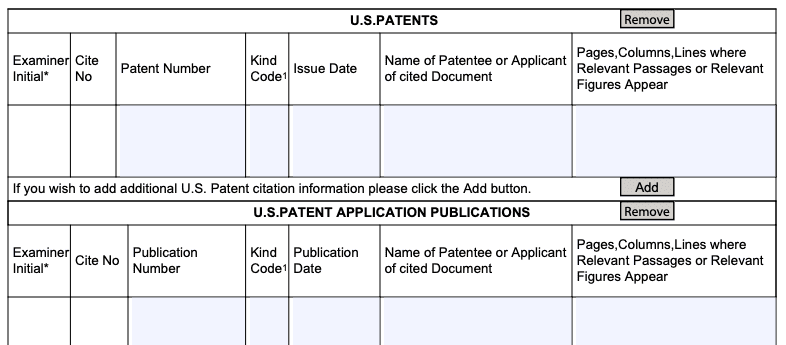Integration of Automation in the Patent Process

Automation has come a long way in a short amount of time, thanks to developments in big data, machine learning, robotics and the Internet of Things. Many people and businesses have grown accustomed to having software and machines perform tasks that humans once handled. Professionals, in particular, have a lot to gain from automation, which can quickly resolve tedious and repetitive work and easily handle some complex chores. For patent professionals curious about how they can benefit from automation, there are several opportunities for incorporating automation into pre-filing and post-filing patent services. The integration of automation in the patent process can reduce the occurrence of human errors, help to optimize time and enable more efficient operations.
Automation in the patent process: information disclosure statements
Patent professionals often need to submit an Information Disclosure Statement (IDS) to the United States Patent and Trademark Office (USPTO), along with their patent application, to fulfill their “duty of candor.” This duty requires patent applicants to provide their patent examiners with any information they have come across that could affect patentability. Each IDS form requests information about U.S. patents and published patent applications, as well as foreign patent documents. Although completing an IDS form is basically just a matter of data entry, it can be quite daunting and time-consuming to input information for each material prior art reference that is known (such as patent document numbers, patent issue dates, patentee information, etc.). For LexisNexis PatentOptimizer® patent drafting tool users, PatentOptimizer® integrates automation in the patent process by automatically populating IDS form information using USPTO patent data after being provided with a list containing only patent document numbers.

The Prosecution Guidebook’s auto-advice
The development of patent prosecution strategies will likely never be a completely automated activity. Patent practitioners’ prosecution decisions often consider much more than what USPTO patent data alone can tell us (e.g., a client’s risk tolerance and financial situation). That being said, fair amount of data interpretation during the patent process can be automated. The Prosecution Guidebook, available on the LexisNexis PatentAdvisor® patent analytics platform, provides direction on recommended prosecution strategies for a specific patent application based on statistical patterns for its assigned examiner. PatentAdvisor™ users only need to click on the Prosecution Guidebook link, and they are provided with tailored patent strategy recommendations that may lower prosecution costs or shorten the patent pendency period, increasing automation in the patent process.
Automation in the patent process: assembling rebuttals
Receiving an office action from a patent examiner can put patent professionals in a tight spot. Regardless of whether a patent professional drafts an office action response entirely from scratch or builds their response from pre-existing work product, office actions can be time-consuming and expensive to overcome. Since more drafting time often equates to more money from a client’s pocket, clients sometimes elect to sacrifice drafting quality to keep down patent prosecution costs. Fortunately, through automation in the patent process, patent professionals can conduct research to find viable office action rebuttals and produce drafts of office action responses in less time without sacrificing quality. By extracting on-point arguments from the USPTO patent archives that have been used by previous patent applicants, the PatentOptimizer Office Action Response tool can generate response language tailored to the objections and rejections a user is facing. Not only can users leverage the wisdom within the USPTO patent database, but they can draft their office action responses in less time than ever before.

It is time for patent professionals to be accustomed to automation in the patent process. Whether used before or after a patent application is filed, automation enabled by LexisNexis® Intellectual Property products can help optimize users’ time and reduce patent prosecution costs.
Learn more about PatentOptimizer.
Learn more about PatentAdvisor.
To explore patent prosecution analytics, read this article and watch the on-demand webinar.
Download this case study to learn how one law firm is saving time and developing well-tailored, concise, high-quality patent applications by using LexisNexis PatentOptimizer.

Write high-quality patents with precision
Automate the review process and eliminate the need for manual draft reviews. Quickly and effectively check all parts of a patent application draft—from patent claims to patent drawings and everything in between.
